Family : Monacanthidae

Text © Giuseppe Mazza

English translation by Mario Beltramini
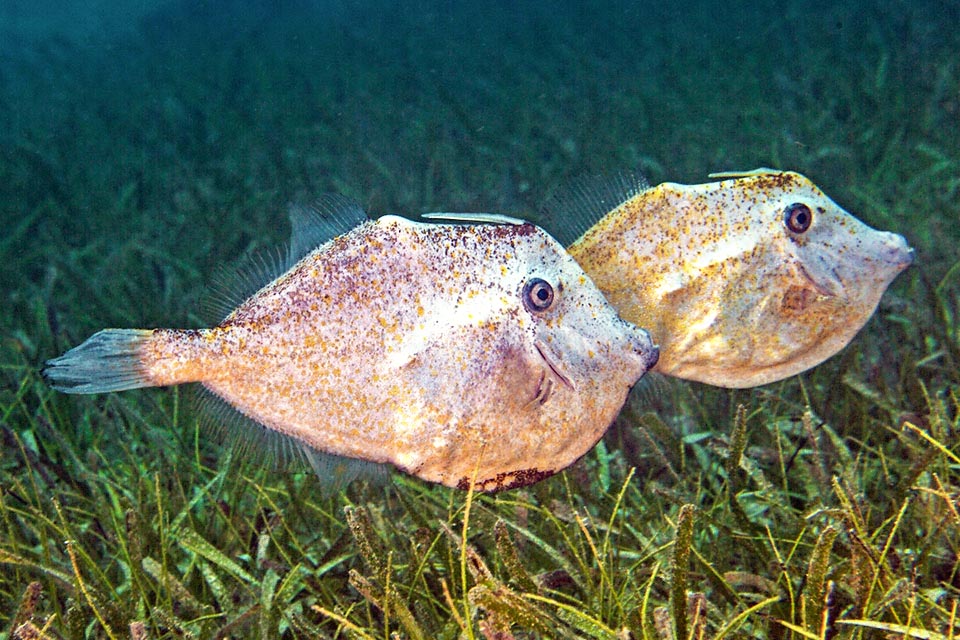
Present in the tropical and subtropical Atlantic waters, Aluterus schoepfii is part of the filefishes, known for the roughness of the skin, used once to smooth artefacts © Allison & Carlos Estape
When a fish is not good to eat or does not look attractive for the lucrative trade of the aquaria, it is often considered with little respect as “trash fish”.
It is the case, for instance, of Aluterus schoepfii (Walbaum, 1792) who, besides not having the colourful livery of the congeneric Aluterus scriptus, pride of the large public aquaria, has very bad flesh and, moreover, at risk of ciguatera, a severe poisoning caused by the diet of this species.
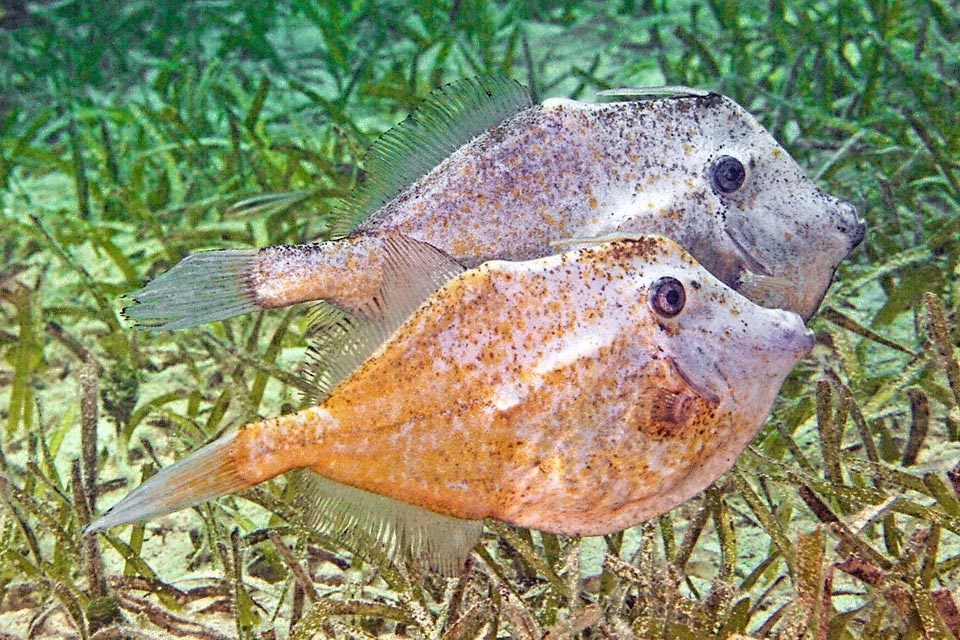
It can reach the depth of 900 m, but is usually found in shallower waters, among corals or on muddy or sandy bottoms where it feeds on algae and leaves of phanerogams © Allison & Carlos Estape
Commonly known as Orange filefish, Aluterus schoepfii belongs to the class of the Actinopterygii, the ray-finned fishes, to the order of the Tetraodontiformes and to the family of the Monacanthidae, the most numerous of this order with just over a hundred species after that of the Tetraodontidae which has more than 200.
Johann Julius Walbaum (1724-1799), the German physician and ichthyologist who described them placed them among the Balistidae, the family of the triggerfishes, with the name of Balistes schoepfii, but now this species has been placed among the filefishes due to the roughness of the skin, used once for smoothing the artefacts, covered by small bony plaques with tiny and spaced spinules.
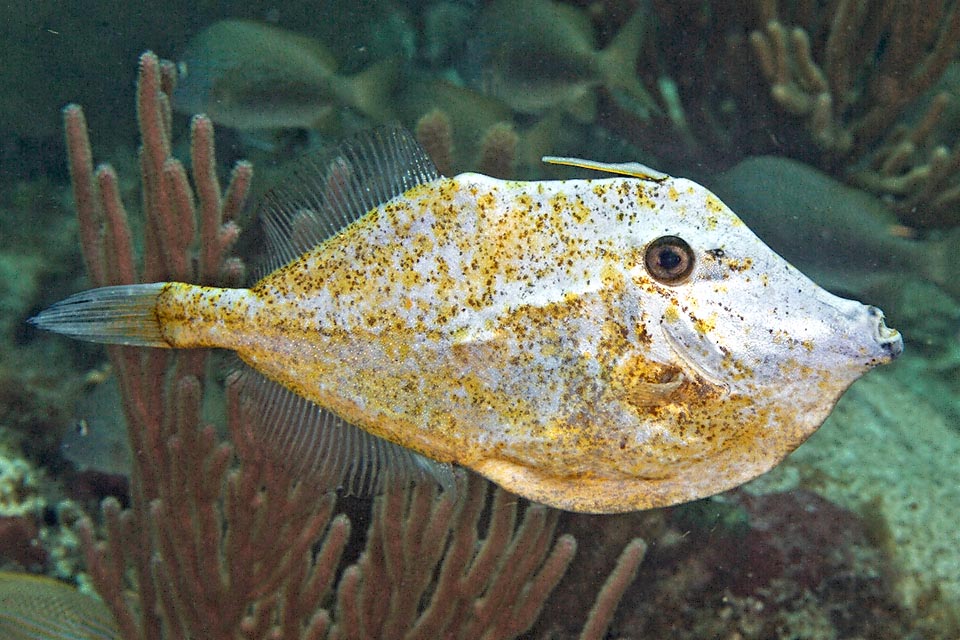
It belongs to the Monacanthidae, family close to the Balistidae, and like the triggerfishes has an erectile dorsal spine, blockable vertically, as defensive weapon © Allison & Carlos Estape
The name of the genus Aluterus, that originates from leather, leather bag, in Latin, in fact refers to this unusual skin, whilst the specific schoepfii honours the memory of Johann David Schöpf (1752-1800) German military doctor and naturalist, friend of Walbaum.
Zoogeography
Aluterus schoepfii has a very vast distribution on both sides of the Atlantic: in America from Canada to Brazil and in Africa from Mauritania to Angola.
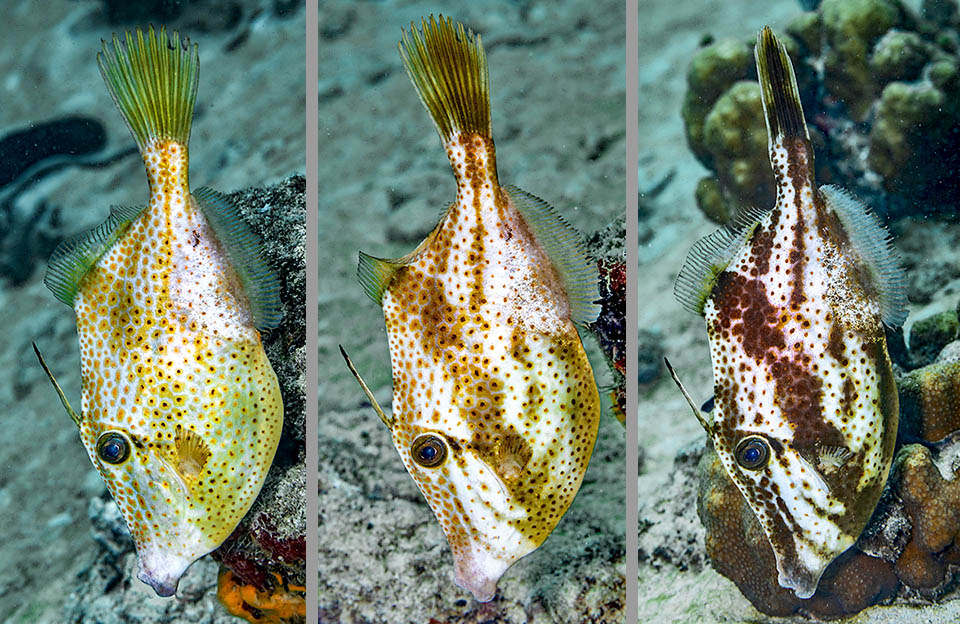
It often stands head down to go unnoticed, and here, while drifting, the chromatophores have created in few seconds on the fading livery dark mimetic bands © Allison & Carlos Estape
Ecology-Habitat
It is a benthic fish frequent in the muddy or sandy seabeds, usually associated with the submerged prairies, but is found also in madreporic environments from 3 and 900 m of depths.
Morphophysiology
Aluterus schoepfii may reach 61 cm, with a current size of about 40 cm.
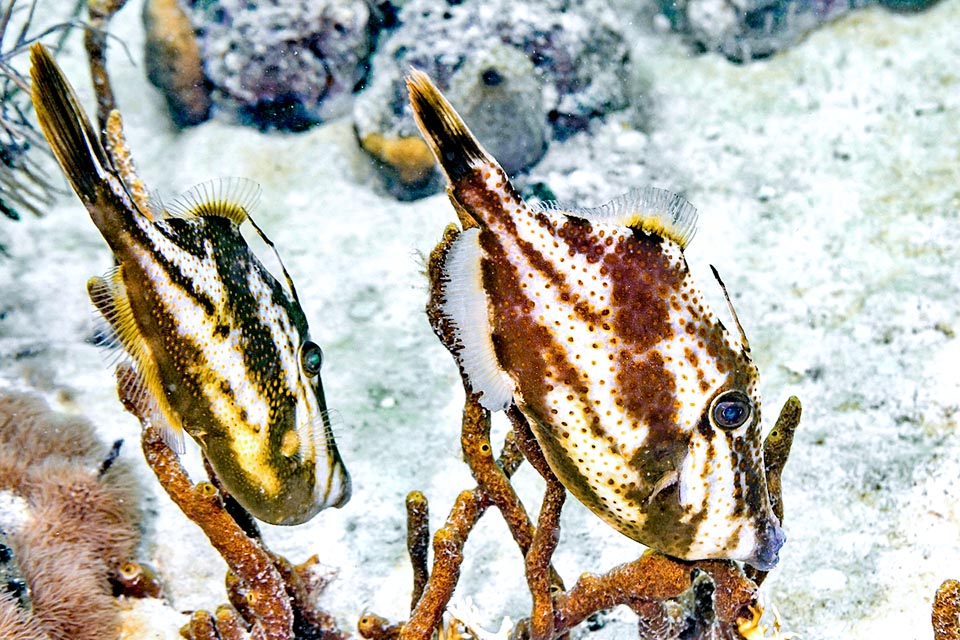
In the reproductive time Aluterus schoepfii swims often in couple but the strongest males may have with them even 5 females © Allison & Carlos Estape
The body is very flat, elongated, with a sharp snout and small concave mouth with dark lips facing upwards. The lower lip is protruding and we note sharp teeth similar to incisors for cutting the weeds: 6 above and 6, or little less, below.
Like the triggerfish (for instance, Pseudobalistes fuscus) the Orange filefish has the first dorsal fin with an erectile spiny ray, here long and slender, lockable in vertical position by a second small spine thanks to a locking mechanism.
If raised, this thin stiletto remains armed also when the fish dies, and serves to discourage the predators who will avoid the species associating it to the memory of annoying stings in the stomach.
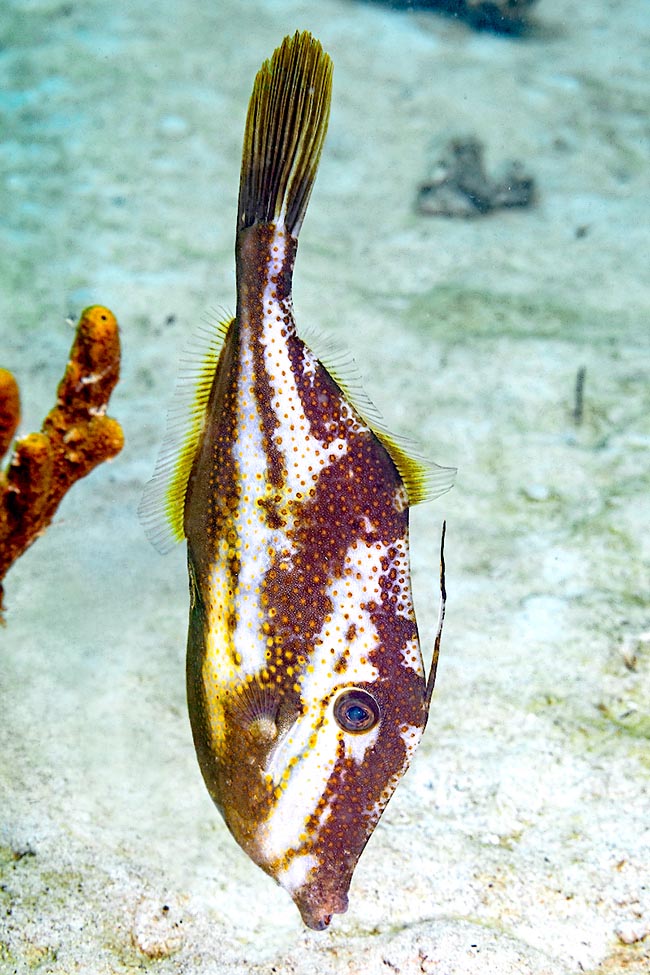
It’s the male who chooses the site where to lay, a nest on the bottom where a female can stick even 300 green eggs © Allison & Carlos Estape
Moreover, when Aluterus schoepfii is being chased by a predator, it can slip with the ray lowered into the first hole it finds where it wedges, raising it and pushing hard on the belly.
This cannot be extroverted as is the case for instance in the same family with Acreichthys tomentosus, but exists in any case a pelvic bone on which to lean that is spread inside the body.
The second dorsal fin and the symmetrical anal have only soft rays: 32-39 the first and 35-41 the second.
The pectoral ones have 11-14 unarmed rays and the pelvic fins are absent.
The robust and long yellowish caudal fin is rounded and can close like a fan.
Practically, it’s the only motor of a fish that moves slowly, at times with its head down.
The small gill opening, oblique, little visible, is often camouflaged by the livery drawings.
If in fact the background colour is mostly olive grey, yellowish or pale white with small orange dots, Aluterus schoepfii may create instantly, acting on the chromatophores, showy mimetic horizontal and oblique dark bands.
Ethology-Reproductive Biology
Often hidden among the leaves or the corals with its head down to escape the predators’ sight, the Orange filefish nourishes of algae and marine phanerogams.
During the reproductive time it can be found in couples or in small schools formed by 2-5 females and one male.
This chooses the sure location for the nest, at times a depression of the sand, where a female can lay even 300 adhesive eggs of a nice bright green.
Then the couple stands guard, and a shy fish gets suddenly aggressive against the intruders, chasing away until chasing those swimming nearby until hatching.
The larvae go up to the surface and the juveniles grow for months sheltered by floating wrecks, mainly weeds carried by the currents such as the sargassoes, that with their ramifications host the small organisms they feed on.
The resilience of the species is mediocre, seen that are necessary 1,4-4,4 years for doubling the populations and the fishing vulnerability, moderate, marks 44 on a scale of 100.
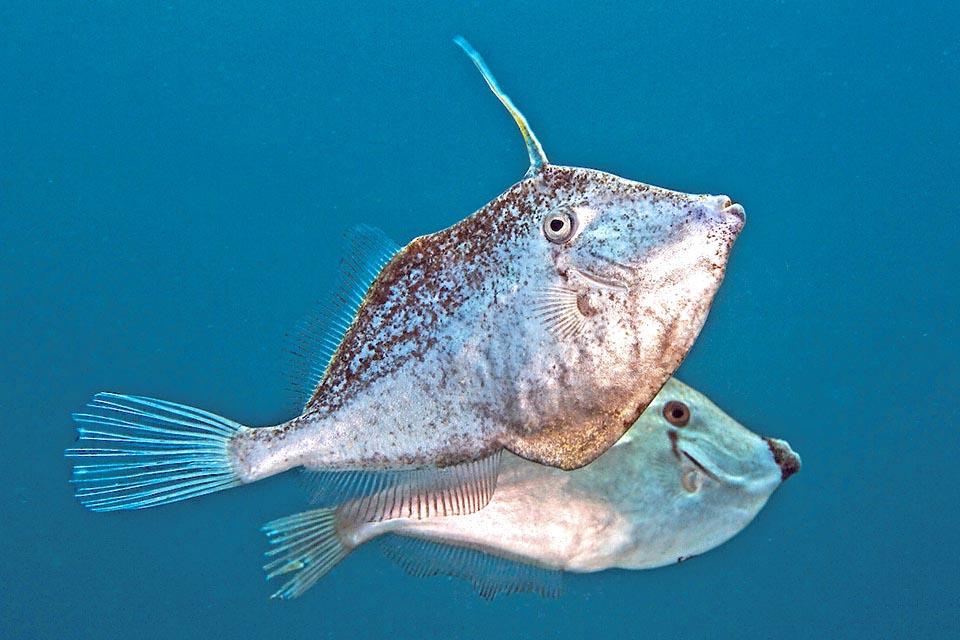
The couple stands guard boldly to the nest until hatching. The larvae rise to the surface and the young grow sheltered by wrecks or floating weeds, mainly sargassoes © Allison & Carlos Estape
Aluterus schoepfii appears in the IUCN Red List of the endangered species as “Least Concern”.
Synonyms
Balistes schoepfii Walbaum, 1792; Alutera schoepfii (Walbaum, 1792); Balistes aurantiacus Mitchill, 1815; Alutera aurantiacus (Mitchill, 1815); Balistes cuspicauda Mitchill, 1818; Aluteres cuspicauda (Mitchill, 1818); Alutera punctata Agassiz, 1831; Aluterus punctatus (Agassiz, 1831); Aluterus holbroocki Hollard, 1855; Aluterus cultrifrons Hollard, 1855.
→ For general information about FISH please click here.
→ For general information about BONY FISH please click here
→ For general information about CARTILAGINOUS FISH please click here.
→ To appreciate the BIODIVERSITY of BONY FISH please click here.
→ To appreciate the BIODIVERSITY of CARTILAGINOUS FISH please click here.
